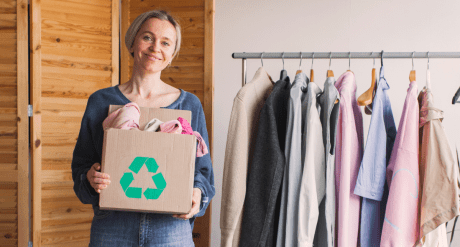
Prepare to Repair: Navigating 2025 Right-to-Repair Requirements in the EU, US, and Beyond

This guide was published on 28th May, 2025. Further regulatory developments may have occurred after publication. To keep up-to-date with the latest compliance news, sign up to our newsletter.
The global push toward circularity and sustainability is transforming how products are designed, sold, and maintained. Right-to-Repair (R2R) legislation is at the forefront of this shift, requiring manufacturers to rethink their approach.
Guide Overview
As governments respond to environmental concerns and consumer demands for longer-lasting products, Right-to-Repair mandates are becoming more comprehensive, far-reaching, and complex. For compliance teams and product manufacturers, this represents both a regulatory risk and a strategic opportunity.
This guide provides a detailed exploration of the rapidly evolving Right-to-Repair landscape, with expert insights into key regional and international developments. We examine the most impactful legislation – enacted and proposed – in the EU, US, Canada, and emerging markets, and share practical implications for businesses seeking to stay compliant and competitive.
Based on our popular webinar ‘Prepare to Repair: Navigating 2025 Right-to-Repair Requirements’ held in April 2025, this guide highlights the critical regulatory developments to watch in 2025, as well as the compliance strategies organizations must adopt to stay ahead.
This Right to Repair Guide Covers
- The EU Right-to-Repair Directive (2024/1799): Core provisions, manufacturer obligations, and the upcoming EU online repair platform.
- Interconnected EU Laws: Insights on ESPR (2024/1781), Batteries Regulation (2023/1542), and the Greenwashing Directive (2024/825).
- US R2R Laws: A deep-drive into enacted and proposed Bills.
- Canadian Updates: Federal copyright amendments and Quebec’s Bill 29 targeting planned obsolescence.
- Global Trends: New legislative initiatives in Brazil and New Zealand.
- EU and National Repair Labels: New repairability indices for smartphones, tablets, and appliances.
- Webinar Q&A: Real-world questions answered on labeling, cost thresholds, battery removability, and legal guarantees.
Authors


Michelle Walsh, Senior Regulatory Compliance Specialist and Team Leader, Compliance & Risks
Michelle is an Irish qualified lawyer, currently living in Belgium with over 16 years experience in global environmental and product regulation.
Her role involves tracking and monitoring key regulatory trends and legislation. Her insights and analysis help clients meet their essential legal requirements relevant to their business needs.
She has a particular interest in sustainability and circular economy. Her specialty areas are the circular economy, waste electrical & electronic equipment (WEEE), the transboundary movement of hazardous waste, ESG – sustainable resource use, ecodesign, and energy efficiency.


Kelly Bugiera, Senior Regulatory Compliance Specialist and Team Leader, Compliance & Risks
As part of her role at C&R, Kelly specialises in researching and monitoring legislative activity on the US state and federal levels, as well as tracking international developments related to topics of customer concern.
With 30+ years of experience in the field of product compliance, she is involved in an array of special customer consulting and assessment projects that cover international standards and regulatory activity for a variety of products and topics. Areas of special focus include circular economy, ESG – Anti-bribery/Anti-corruption, chemicals, product safety, consumer electronics and drinking water.


Samantha Anguiano, Regulatory Compliance Specialist, Compliance & Risks
Samantha is a Mexican qualified lawyer, currently living in the US with over 7 years of experience in legal research, negotiation, and regulatory compliance.
She is currently part of the Global Regulatory Compliance team at Compliance & Risks, where she conducts regulatory analysis at several U.S. state levels, as well as internationally.
Prior to Compliance & Risks, Samantha has years of experience developing risk mitigation strategies, and implementing compliance policies.


